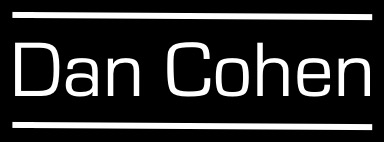The second day of the “Digital Humanities and the Disciplines” conference at Rutgers was so full of thought-provoking talks and conversation that it’s taken me a few days to digest it. The highlights:
Chris Kelty (who has recently moved to UCLA’s Department of Information Studies) gave a talk about his book Two Bits: The Cultural Significance of Free Software. After providing an excellent history of software from the origins of Unix to Richard Stallman, Kelty, who is an anthropologist by training, argued quite persuasively that free software is far more than a technical movement. In Kelty’s words, free software “creates a public” around the software project, a civic notion that relates directly to the arguments about the public sphere that have permeated academic thinking for the last two decades. Free software is thus important not only for its functionality and its freedom, but also because for a lot of people it creates a consciousness of and participation in the public sphere—and it gives them a set of practices for bringing about that public sphere.
Classicist Greg Crane of Tufts and Perseus fame spoke of many aspects of “Humanities in a Digital Age.” Perhaps his most intriguing point—one echoed by others during the conference—was that the digital humanities allow for a far wider participation in the process and products of scholarship than in the age of paper. Crane fascinated the audience by showing how his undergraduates actually contribute to, not just read about, classics, by adding to a “treebank,” or linguistic database and concordance that Crane and others are building. In other words, in a digital age classics need not be the sole province of the Great Professor/Editor of volumes of Greek and Latin. Crane also spoke of the enormous potential of automated translation and large-scale computational analysis to address complex questions such as the influence of Plato on the Islamic world, a topic that requires language skills and a breadth of reading that few professors, if any, possess.
Martha Nell Smith of the University of Maryland and the founder of the Maryland Institute for Technology in the Humanities then shook up the room with her challenging talk, “Enclaves: Perils and Possibilities.” Despite being a promoter of the digital humanities, Smith thought it was important for those in the field to be self-critical. She worried that, as Cass Sunstein pointed out in Republic.com, we might be talking too much amongst ourselves, without competing perspectives. We’ve gotten too swept up with what our technology can do, rather than what the humanities can do. And we need to let critical thought, such as feminist analysis, unsettle the way that the digital humanities has been proceeding. Smith’s talk unsurprisingly touched off a vibrant discussion; thanks to my followers on Twitter for sending me additional comments that I could feed into that discussion. To be honest, I think that much of what Smith was looking for in the digital humanities—e.g., the importance of bringing together divergent views and democratizing the process of authoring and editing a text—has already been factored in, or certainly been factored in far more than in the analog world. After all, this is the medium that gave us Wikipedia. But Smith’s overall point is well-taken; any new field must engage in serious self-criticism. Frankly, this has been an often unmentioned problem with the digital humanities.
David Jaffee of the Bard Graduate Center wrapped up the proceedings with his talk on “Thinking Visually with Historians: The Challenge of New Media for History.” He noted that we tend to forget that visual materials were used in the classroom even before the digital age. The digital age has accelerated the use of such material, but we still haven’t really thought about effective ways to turn the visual into understanding, regardless of the technology. Jaffee argued that we need to think in terms of learning modules rather than slides—i.e., we can’t just put visual material out there and think that students will comprehend what to do with it. He then showed some terrific projects he’s worked on, including the forthcoming Picturing U.S. History.

Leave a Reply
You must be logged in to post a comment.